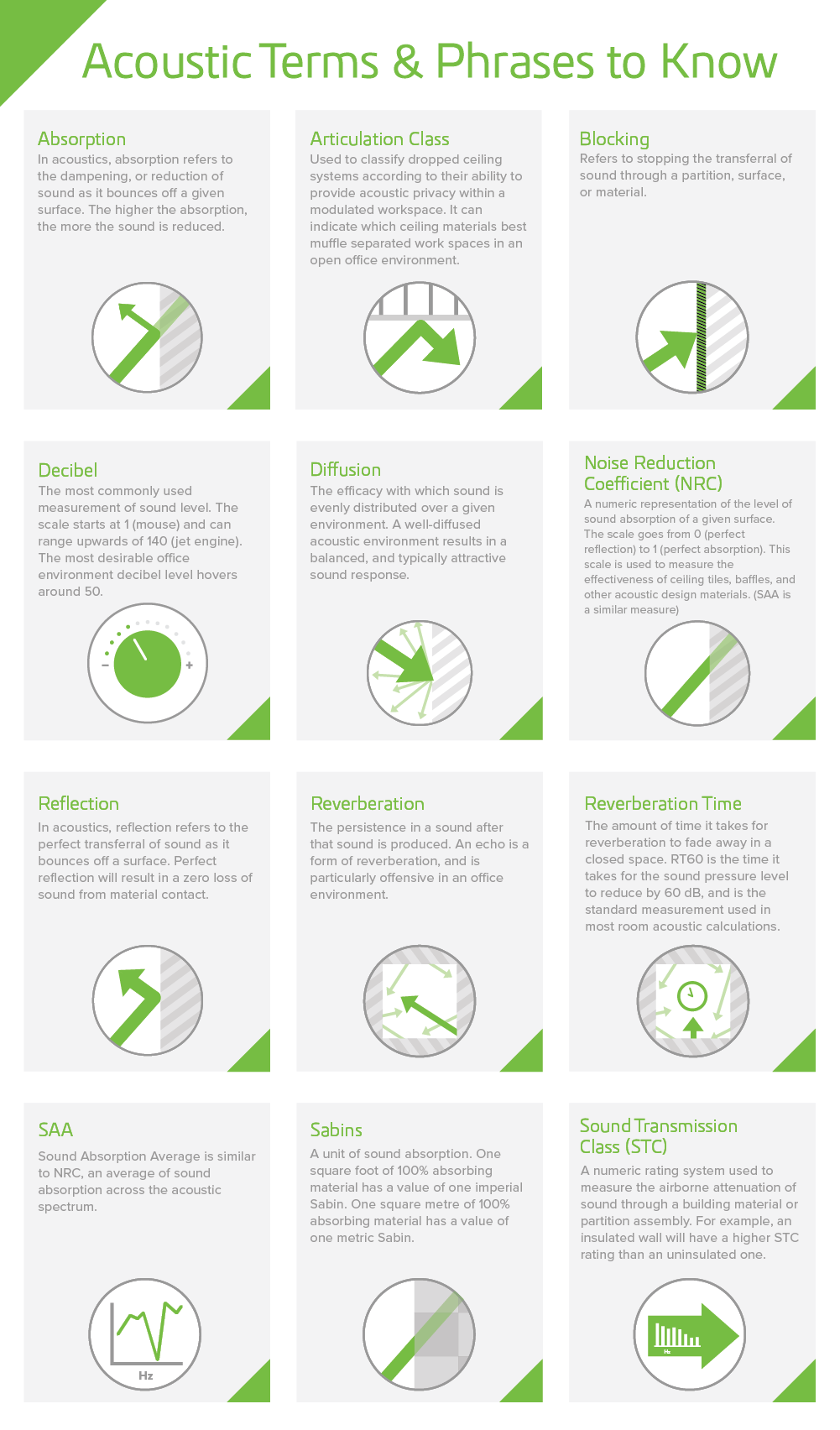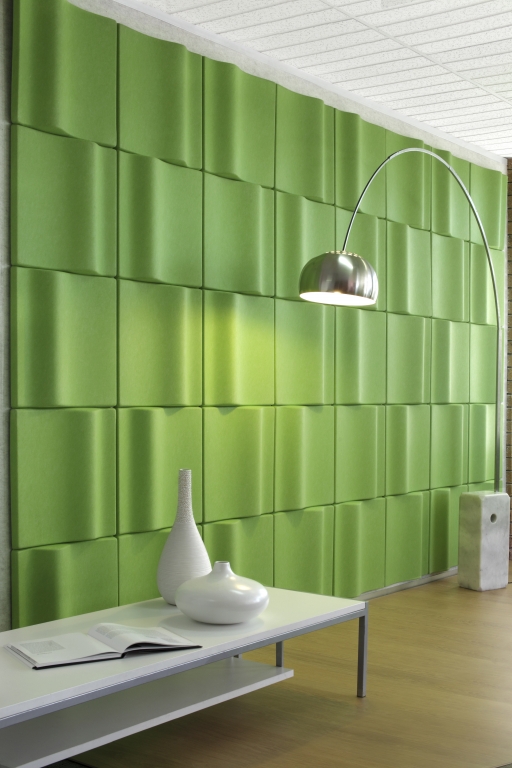Acoustics 101: How Acoustics Work
Common Acoustic Problems : They Can Be Fixed (Or Avoided)!
Why do rooms echo?
We’ve all been in an expansive public space or lobby with high ceilings and hard floors, and have likely noticed the excessive noise that’s created in that environment.
This familiar phenomena is known as an echo, and occurs when sound waves bounce back and forth between surfaces. When there’s a large crowd in a room like the one described above, you can imagine how noisy things get when the sound comes from multiple sources.
What about the room next door?
Often walls, floors and ceilings are not built with acoustics in mind, and sound is transmitted from room to room. High STC (Sound Transmission Coefficient) materials and wall/ceiling/floor assemblies help ensure sound is not transmitted from one space to the next.
Acoustic terms and phrases to know

Common Acoustic Misconceptions
Addressing acoustic issues costs too much
It’s an up-front investment to plan out the acoustic design of your space. But planning means that you’ll avoid bigger acoustic issues in the long run.
If you don’t want your clients to see acoustic design as a luxury feature, don’t treat it like one. Instead, build a budget for acoustics into your project, right from the beginning. You’ll be amazed how a simple tactic like that can influence the way clients see various design options.
Having a few quick solutions up your sleeve can help the acoustic health of your space without sky-high costs.
More absorption and fibrous materials solves everything
Insulating walls and using other fibrous materials help improve the acoustic health of a noisy room, but they don’t fix everything. It’s possible to over-engineer your acoustic solutions to where a space is actually “too quiet.”
Background noise cancels out any unwanted noise, right?
It can be a quick fix, but background noise such as sound masking won’t solve everything, and certainly can’t cancel out all unexpected spikes in volume that can hinder a healthy acoustic work environment. Plus, layering extra sound on top of conversation can result in a louder overall space.
The numbers: all we need to measure is reverb time
Reverberation time is defined as the length of time it takes for sound to decay 60 decibels from its initial level. For spaces like a classroom or office, an appropriate reverberation time should be around 0.6 seconds. This means that sound decays relatively quickly rather than bouncing around too much.
If reverberation time is too high, resulting in perceivable echo, adding sound absorbent materials to a space will help capture sound and reduce reverb time to acceptable levels.
Measuring reverb time won’t cover all of your issues, however - you’ll still want to consider things like spatial/auditory programming, absorption, and sound transmission through walls or partitions.
Stop Acoustic Issues Before They Start
Easy solutions: Design your space to keep sound sources and reflections under control or dispersed, and add acoustically-absorbent materials to your surfaces to capture reverberations. Look for ways to interrupt or absorb acoustic reflection, and isolate sound sources and sound receivers to help stop excessive noise.
With everything that you have to manage in a design project, it can be easy to overlook acoustics. We’ve put together a planning guide for designers and architects, to help ensure your space exceeds your client's expectations, resulting in beautiful, acoustically-healthy design.
Get access to our Acoustic Design Guide here.
